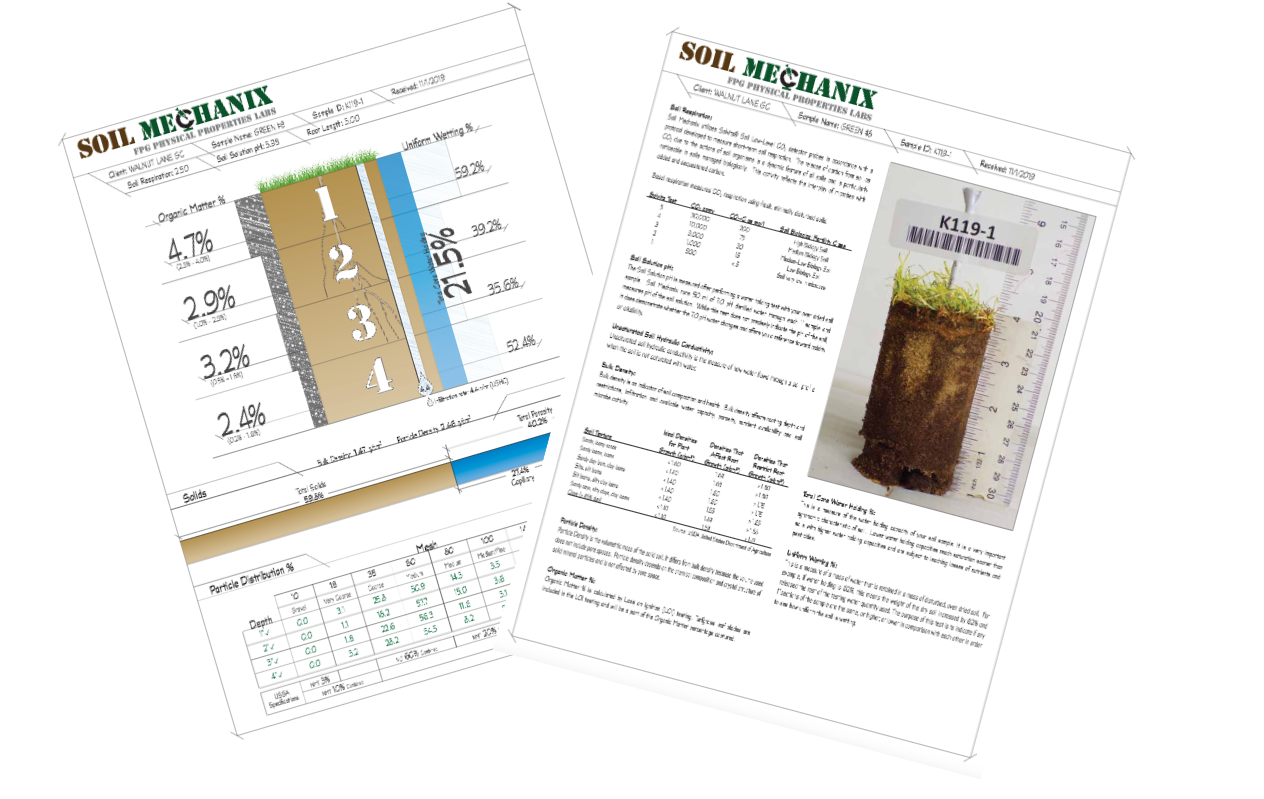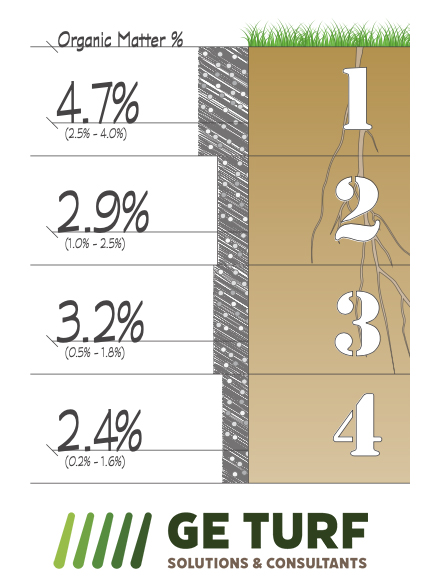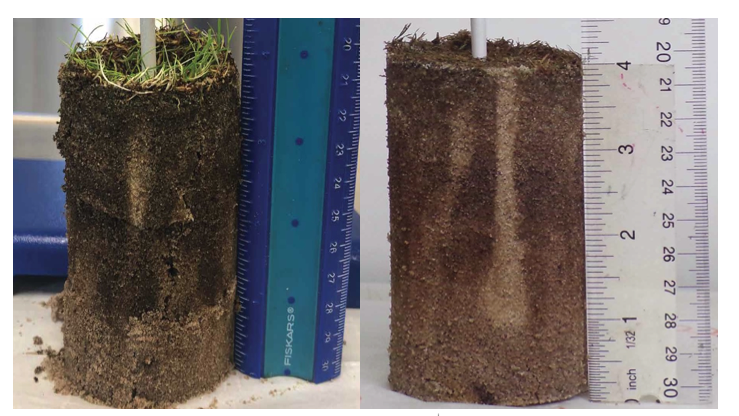Most golf course superintendents will agree that the majority of their frustration is with the top one inch of their putting greens, specifically in regards to their OM (organic material) levels.
Having too little OM does not provide enough structure to the playing surface and having too much creates a host of problems including: excess water holding, lack of oxygen, low microbial activity, compaction, etc.
Therefore, having the best method of testing physical soil properties can provide you with better insight to address those problems. Once a baseline has been formed, we can then address these problems with new technologies such as Ninja Tines.

Soil Mechanix utilizes the LOI (Loss on Ignition) method which burns all the C out of the sample accurately to 10 % or more. ISTRC uses the Walkley-Black (WB) method, an acid digestion method, which is only accurate up to 2%.

Infiltration Rate
Soil Mechanix uses the unsaturated testing method while ISTRC uses a saturated method. We believe the unsaturated method is a better comparison to the real-world examples. We time the addition of water to the core as it was submitted from the field. A good comparison to this would be a pop-up thunderstorm on the turf. Does it puddle or absorb and how fast?

CO2 Generation
This is one of the unique features of Soil Mechanix. We use a system from Solvita® that allows us to measure the amount of CO2 generated from a submitted sample over a 24-hour period. As we gather data over time, we will be able to optimize the CO2 needed for enhanced plant performance.

Timing on Report Generation
On average, Soil Mechanix issues the results in four to five days after receipt of the sample. ISTRC, by comparison, issues the report between two to six weeks after receipt of the sample.

